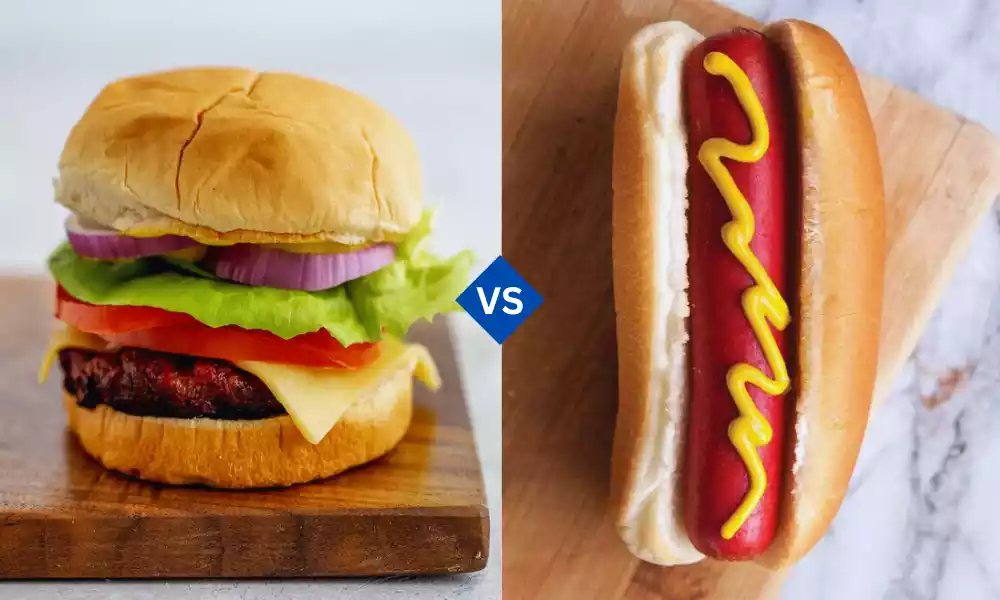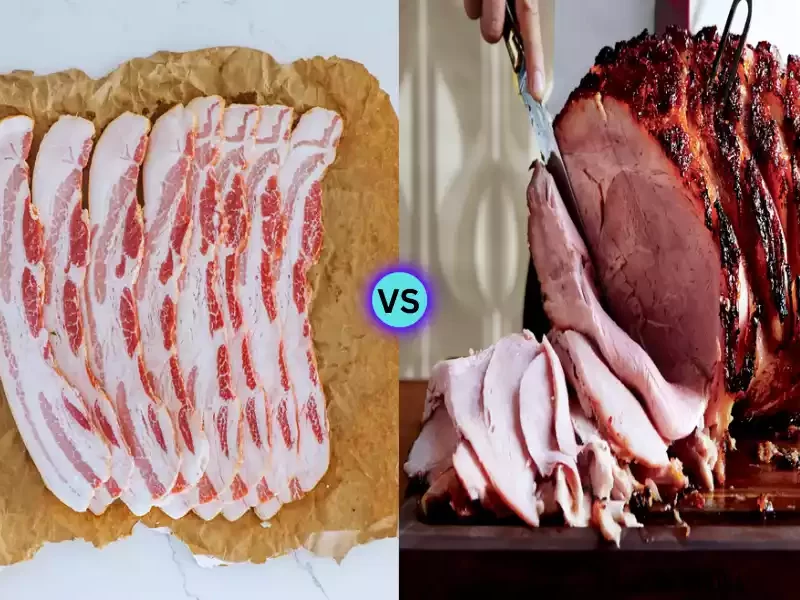The hamburger and hotdog are two iconic American fast food items, each with its own unique history and cultural significance. The hamburger, typically a ground beef patty sandwiched between two slices of bread or a bun, is believed to have its origins in the 19th century, with German immigrants in the United States playing a significant role in its popularization.
It has since become a symbol of American cuisine, known for its versatility and wide appeal. On the other hand, the hotdog, a grilled or steamed sausage served in a sliced bun, is often associated with American baseball games and outdoor grilling.
Its roots can be traced back to German and Austrian butchers, and it became popular in the U.S. in the early 20th century. Both the hamburger and hotdog are celebrated for their simplicity, ease of preparation, and ability to be customized with a variety of toppings and condiments.
Definition of Hamburger
A hamburger is a food item consisting of a cooked patty, typically made from ground beef, placed inside a split bread roll or bun. Often served as a type of sandwich, it is a staple of American fast-food cuisine but has gained worldwide popularity.
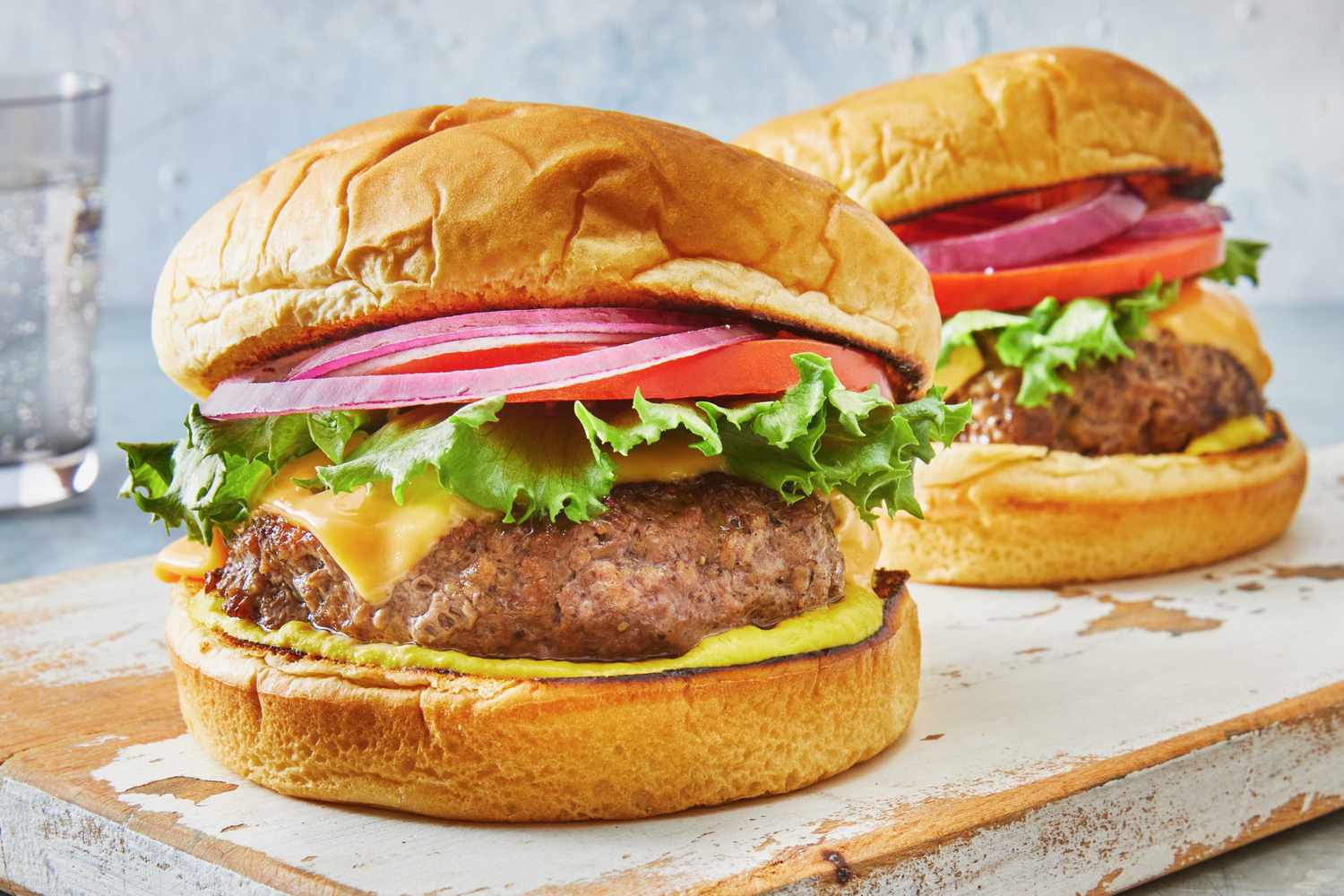
The hamburger can be customized with various toppings and condiments, such as lettuce, tomatoes, onions, pickles, cheese, ketchup, mustard, and mayonnaise. This versatility in preparation and ingredients makes the hamburger a diverse and adaptable dish in different culinary cultures.
Definition of Hotdog
A hotdog is a cooked sausage, traditionally grilled or steamed, served in a partially sliced bun. It is commonly made from beef, pork, chicken, turkey, or a combination of meats. The sausage used in a hotdog is typically seasoned and may be smoked for added flavor.
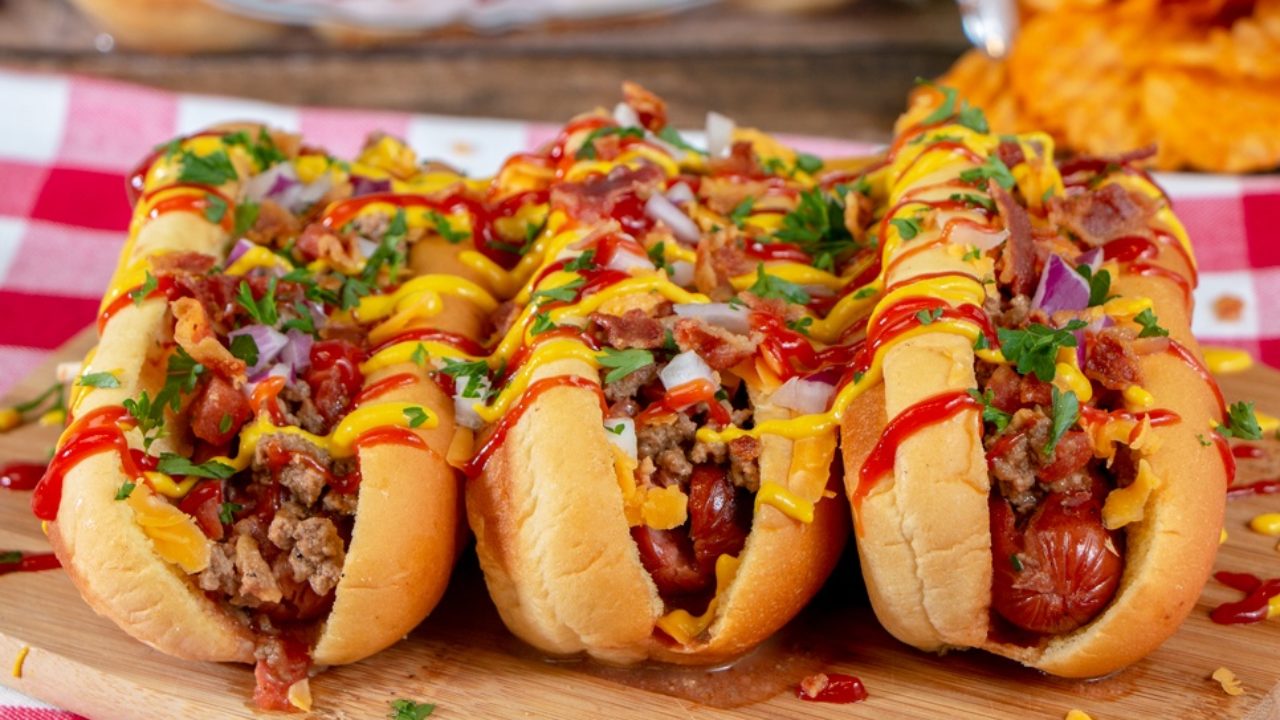
Hotdogs are a staple of American cuisine, often associated with street food, sports events, and casual dining. They are usually garnished with a variety of condiments and toppings such as mustard, ketchup, onions, relish, sauerkraut, and cheese.
The hotdog is celebrated for its simplicity, ease of preparation, and its ability to be customized to individual tastes.
Comparison table of Hamburger vs Hotdog
Here’s a comparison table highlighting the key differences between a hamburger and a hotdog:
| Feature | Hamburger | Hotdog |
|---|---|---|
| Main Ingredient | Ground beef patty (or other meats/alternatives) | Sausage (beef, pork, chicken, turkey, or combinations) |
| Bread Type | Bun (often sesame-seed, can be various types) | Long, soft roll, specifically designed for the sausage |
| Origin | German immigrants to the United States, in the 19th century | German and Austrian butchers, popularized in the US |
| Cooking Method | Grilled, pan-fried, or barbecued | Grilled or steamed |
| Typical Toppings | Lettuce, tomato, onion, pickles, cheese, condiments | Mustard, ketchup, onions, relish, sauerkraut |
| Cultural Significance | Symbol of American fast food, globally adapted | Associated with American sports events, street food |
| Variations | Regional and gourmet variations, different meats and toppings | Variations in sausage type and toppings |
| Nutritional Content | Can vary, often high in protein and can be high in fat | Generally high in sodium, variations can be leaner |
| Serving Context | Restaurants, fast food, home cooking, BBQs | Street food, sports events, BBQs, casual dining |
This table offers a general overview. Specific hamburgers and hotdogs can vary greatly depending on the region, preparation method, and individual preferences.
How to make the perfect Hamburger
Making the perfect hamburger involves several key steps and considerations to ensure flavor, juiciness, and overall quality.
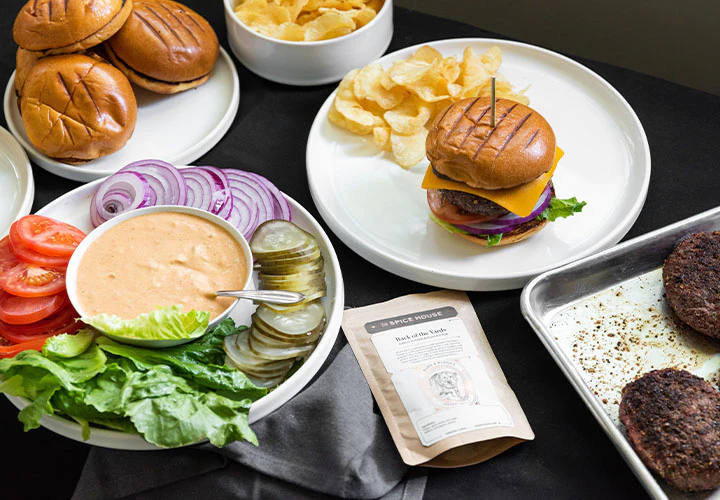
Here’s a general guideline for creating a delicious hamburger:
Ingredients
- Ground Beef: Choose high-quality ground beef with a fat content of around 15-20% for juiciness.
- Buns: Soft, fresh buns (like brioche or sesame seed buns).
- Seasonings: Salt and pepper, at a minimum.
- Toppings: Lettuce, tomato, onion, pickles, cheese (optional), and any other preferred toppings.
- Condiments: Ketchup, mustard, mayonnaise, or any special sauces.
Equipment
- Grill or skillet
- Spatula
- Meat thermometer (optional)
Steps
- Preparation:
- Gently form the ground beef into patties, about ¾ inch thick. Don’t overwork the meat to avoid tough burgers.
- Create a small indentation in the middle of each patty to keep it from expanding during cooking.
- Season the patties generously with salt and pepper just before cooking.
- Cooking:
- Preheat your grill or skillet over medium-high heat.
- The patties can be cooked on the barbecue or inside the skillet. Cook for approximately 3-4 mins on each side.
- Flip the burgers and cook for an additional 3-4 minutes for medium-rare to medium (internal temperature of 130-150°F, 55-65°C). The cooking time can be adjusted to the level you want to achieve.
- If adding cheese, place it on the patties during the last minute of cooking to melt.
- Assembling the Burger:
- Toast the buns lightly on the grill or in a skillet for extra flavor and texture.
- Place the patty that you cooked in the lower half of the bun.
- Add your desired toppings and condiments.
- Cover the bun with the top portion of the bun. Cover with the top half of the.
Tips for Perfection
- Meat Quality: Use fresh, high-quality ground beef for the best flavor.
- Don’t Flatten the Patties: Avoid pressing down on the burgers while they’re cooking, as this can squeeze out the juices.
- Resting: Let the patties rest for a couple of minutes after cooking to redistribute the juices.
- Customization: Experiment with different types of cheese, toppings, and condiments to find your perfect combination.
- Safety: Ensure the burgers are cooked to a safe internal temperature, especially if using meat other than beef.
Remember, the “perfect” hamburger can vary based on personal preference, so feel free to adjust the ingredients and cooking method to suit your taste!
How to make the perfect Hotdog
Making the perfect hotdog involves selecting quality ingredients and using the right cooking techniques to enhance flavor and texture.
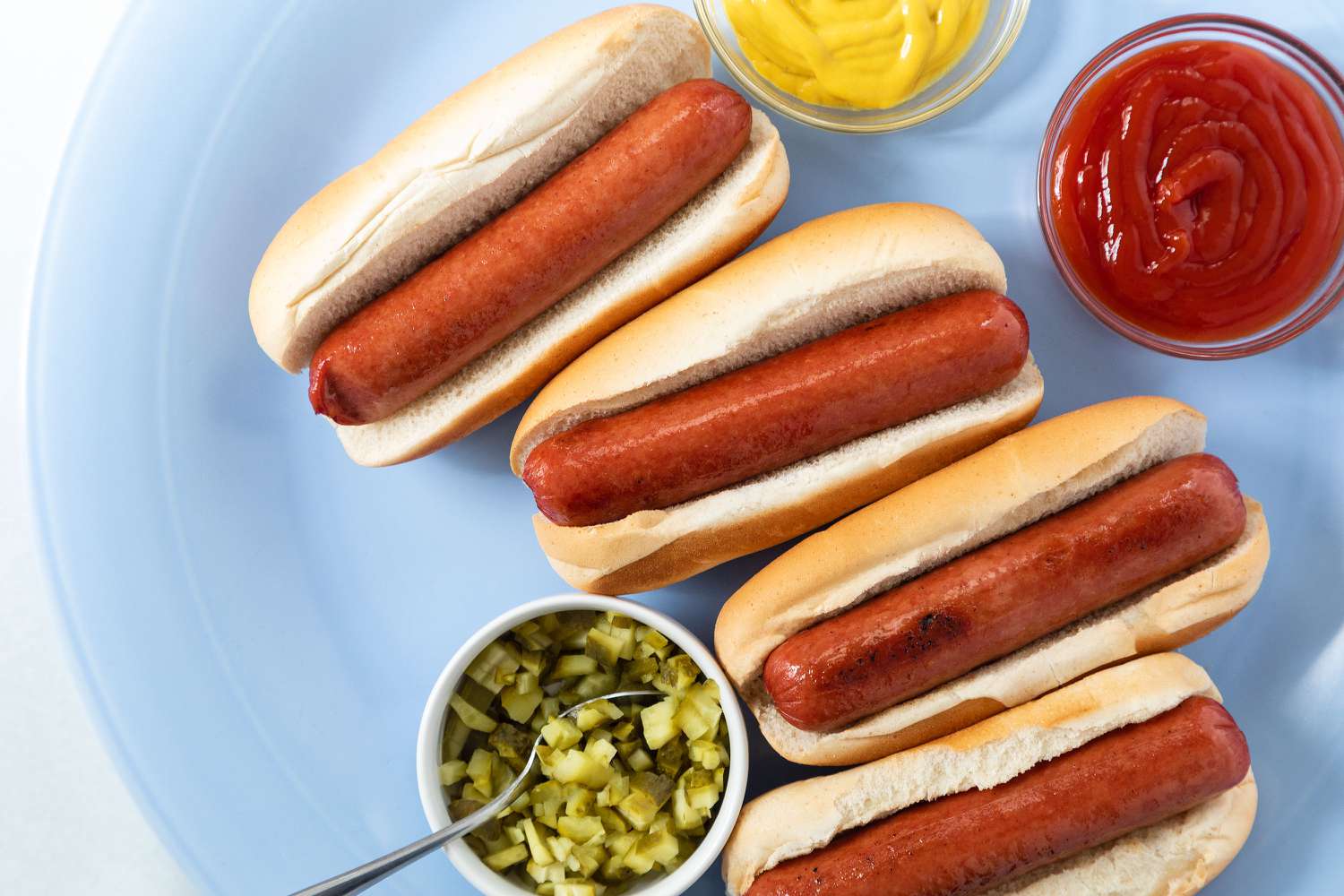
Here’s a step-by-step guide:
Ingredients
- Hotdogs: Choose high-quality sausages. Beef, pork, or a blend are popular choices.
- Buns: Soft, fresh hotdog buns.
- Toppings: Traditional toppings include mustard, ketchup, relish, onions, sauerkraut, and cheese. You can also be creative with toppings.
- Condiments: Mustard, ketchup, mayonnaise, or specialty sauces.
Equipment
- A pot for boiling, a grill, or a skillet
- Tongs
Steps
- Cooking the Hotdogs:
- Boiling: Bring a pot of water to a light simmer (not a rolling boil). Add the hotdogs and cook for about 5 minutes until heated through.
- Grilling: Preheat your grill to medium heat. Grill the hotdogs, turning occasionally, until they are heated through and have nice grill marks, about 5 to 7 minutes.
- Pan-frying: Heat a skillet over medium heat. A small amount of oil or butter. Place the hotdogs in the skillet, turning occasionally, until they are nicely browned on all sides.
- Preparing the Buns:
- Lightly toast the buns on a grill or in a skillet for a better texture and flavor. This step is optional but recommended.
- Assembling the Hotdog:
- Place the cooked hotdog in the bun.
- Add your chosen toppings and condiments. For a classic style, you might start with mustard, add relish and onions, and then ketchup, if desired.
Tips for Perfection
- Quality of Ingredients: Opt for high-quality sausages and fresh buns for the best taste.
- Avoid Splitting: If boiling or grilling, avoid splitting the hotdogs open as it can cause them to lose juices.
- Customization: Experiment with different toppings and condiments to create your perfect hotdog.
- Serving Temperature: Serve the hotdogs warm for the best experience.
The perfect hotdog is ultimately subjective and depends on personal preferences, especially when it comes to the choice of toppings and condiments. Feel free to get creative and enjoy the process!
Cultural Significance
The cultural significance of hamburgers and hotdogs in American society and beyond is quite profound, each symbolizing different aspects of American life and culture.
Hamburger
- Symbol of American Cuisine: The hamburger is often considered the quintessential American food. It represents the melting pot nature of American society, having evolved from German immigrants’ cuisine to a distinctly American icon.
- Fast Food Revolution: The rise of the hamburger is closely tied to the growth of the fast-food industry in the United States. Chains like McDonald’s and Burger King helped spread American culture globally, with the hamburger as their flagship product.
- Customization and Diversity: The adaptability of the hamburger, where it can be customized with various toppings and styles, reflects the diversity and individualism valued in American culture.
- Economic Indicator: Often, the price of a hamburger is used as an informal economic indicator (like the Big Mac Index), demonstrating its global reach and economic significance.
- Gourmet Trend: More recently, the hamburger has been embraced by the gourmet food movement. High-end versions with exotic ingredients and artisanal preparation techniques reflect the evolving American palate.
Hotdog
- Icon of American Leisure: The hotdog is closely associated with American leisure activities, particularly sports. Eating a hotdog at a baseball game is considered a quintessential American experience.
- Street Food and Accessibility: Hotdogs have long been a staple of American street food, symbolizing the fast-paced, on-the-go lifestyle and the accessibility of American cuisine.
- Cultural Events: The hotdog eating contest, like the famous one held annually at Coney Island, New York, has become a part of American cultural lore, celebrating excess and competition in a uniquely American way.
- Regional Variations: Different regions in the U.S. have their versions of the hotdog (e.g., the Chicago-style hotdog, New York-style, etc.), showcasing the regional diversity within American cuisine.
- Immigrant Influence: Like the hamburger, the hotdog also has immigrant roots (German and Austrian), representing the contribution of immigrants to American culture and cuisine.
Both the hamburger and hotdog have transcended their status as mere food items, becoming deeply embedded in American culture and identity. They also serve as culinary ambassadors, introducing aspects of American culture to other parts of the world.
Final Thought
Hamburger and Hotdog are more than just popular American food items; they are cultural icons. The hamburger, emblematic of the American fast-food industry and culinary adaptability, reflects the diversity and dynamism of American society.
Meanwhile, the hotdog, synonymous with American leisure and street food culture, encapsulates the nation’s love for sports and tradition. Both have immigrant roots, showcasing America’s melting pot heritage and have gained global recognition and adaptation.

